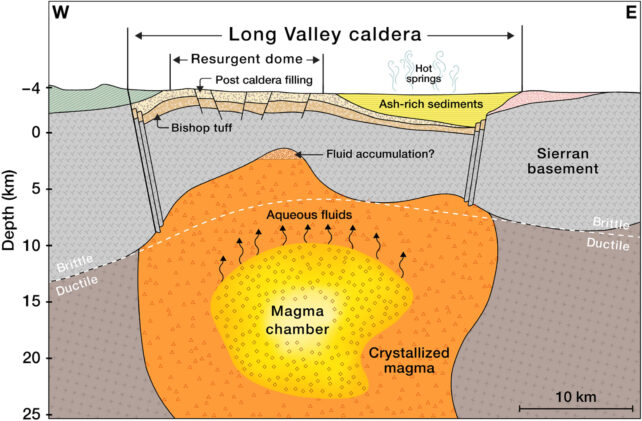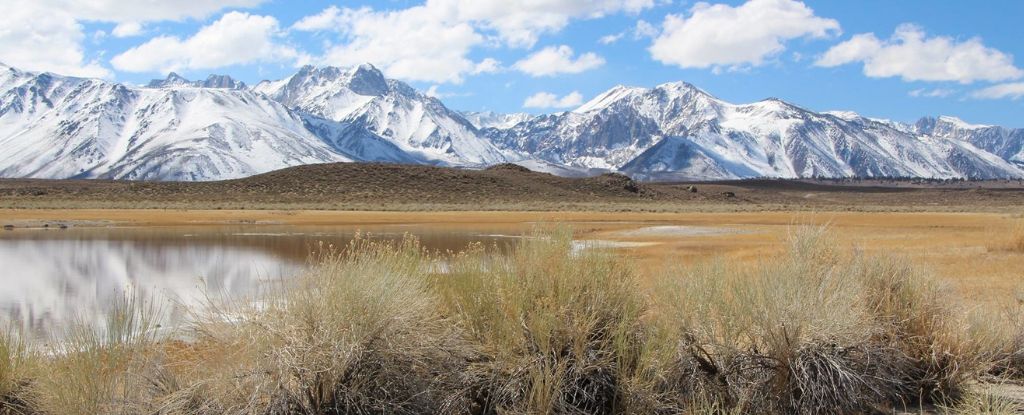A recent study conducted by researchers at the California Institute of Technology (CIT) has revealed that the Long Valley Caldera in eastern California is exhibiting signs of restlessness as its deep magma chamber cools down, preparing for a long period of inactivity.
Approximately 100,000 years ago, the volcano erupted with such force that it covered the modern city of Los Angeles under a kilometer of sediment. Since then, the Long Valley volcano has remained relatively dormant, but there have been disturbances in the form of seismic activity originating from the caldera, which is a depression situated above the underground volcano.
Over the years, the volcano has experienced periods of “pronounced unrest” that caused fluctuations in the ground. However, this phenomenon does not necessarily indicate an imminent catastrophic eruption. The researchers from CIT have found evidence suggesting that these activities are a result of the supervolcano cooling down, rather than heating up.
Geophysicist Zhongwen Zhan states, “We don’t believe that the region is preparing for another supervolcanic eruption, but the cooling process could potentially trigger earthquakes and minor eruptions.” Zhan further highlights that the region experienced several magnitude 6 earthquakes in May 1980 as a result of this cooling effect.
The researchers employed a distributed acoustic sensing technique using a 100-kilometer fiber optic cable to gather data. This method, equivalent to 10,000 individual seismometers, allowed them to detect over 2,000 seismic events over a year and a half. Many of these events would have gone unnoticed by humans on the ground.
To analyze the data, a machine learning algorithm was used to create a high-resolution map of the caldera and the underlying volcano. This map provided exceptional lateral resolution at depths up to 8 kilometers and even revealed detailed imagery of deeper portions, up to 30 kilometers below the surface.
The study’s findings clearly illustrate a distinct separation between the large magma chamber, situated 12 kilometers below the surface, and the shallow hydrothermal system above it. As the deeper chamber cools, gases and liquids rise towards the surface, potentially causing earthquakes and ground inflation.

This bubbling effect could explain the observed surface deformation and seismic activity, according to the researchers.
It is important to note that this process differs from an active volcanic eruption, where magma forces its way up into the upper crust and erupts on the surface. The way seismic activity travels through the layers suggests that the top of the magma chamber has solidified over time, forming a hardened lid of crystallized rock.
As the supervolcano gradually winds down, the researchers state that its “beating heart” is slowly slowing. The team plans to measure the final beats of the volcano’s activity at a depth of 20 kilometers using a 200-kilometer-long cable of seismic sensors.
This groundbreaking study was published in Science Advances.


